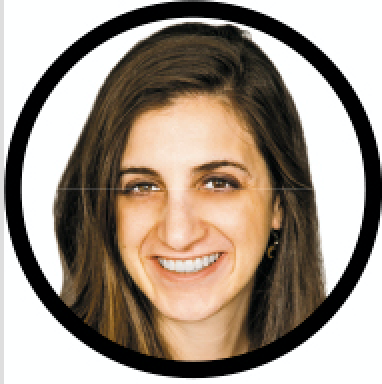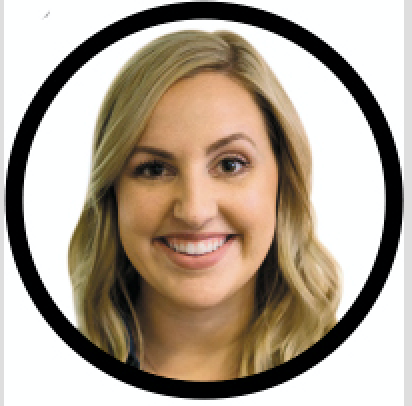Children’s hospital addresses AYA patients’ cancer care needs
An innovative program helps adolescents and young adults (AYAs) hospitalized with cancer to cope with their disease and navigate their journey through treatment and beyond.
Nick Meza

Jamie Frediani, MD

Kara Noskoff

Figure 1

Figure 2

Nick Meza was 17 years old when doctors delivered the life-changing news that he had acute lymphoblastic T-cell leukemia. Halfway through his senior year in high school, Meza would spend the foreseeable future at the Hyundai Cancer Institute at Children’s Hospital of Orange County (CHOC), California.
Meza says he felt like an outsider, at first. “Every time a child life specialist would come in, they’d bring you a coloring book or a puzzle. They didn’t have anything focused for older kids,” Meza says.
A positive person by nature, Meza still struggled with why cancer happened to him. He says the whole situation stunk. However, he didn’t have anyone going through the same thing or to talk with who was about the same age.
Things changed at CHOC in the middle of Meza’s 3 years of inpatient and outpatient cancer treatment. Children’s Hospital of Orange County started offering activities aimed at engaging teenagers and young adults. First it was simply a competition to encourage adolescents and young adults, known as AYAs, to get out of bed and walk the halls. Today, CHOC offers an assortment of social and educational activities through its Richard C. and Virginia A. Hunsaker AYA Oncology Child Life Program (Figure 1).
Meza, who at 23 is in remission and studies mechanical engineering and robotics at Embry-Riddle Aeronautical University in Prescott, Arizona, is among the developers, leaders, and mentors of CHOC’s AYA program.
About AYA oncology patients
Cancer incidence among AYAs is increasing, according to a recent editorial in Cancer.1
In that editorial, CHOC oncologist Jamie Frediani, MD, says that research in the last 15 to 20 years has revealed that adolescents have not had the same survival gains seen in the pediatric patients younger than age 12 years or older adults.
“There has been a lot of interest in the community at looking at this particular cohort of patients of adolescents to young adults, defined as from 15 to 39 years of age. It incorporates the wide range of oncologic malignancies that happen during the time frame,” Frediani tells Contemporary Pediatrics.
Whereas the reasons for the lower survival among AYA cancer patients is multifactorial, a large part is psychosocial, according to Frediani.
“We’re meeting these patients at very critical junctures in their lives. They’re in the process of graduating high school, starting a career, or starting a family,” she says. “Putting cancer in that environment undoes all of that. It takes them away from school. It takes them away from peer groups. It takes them away from a job, career, their family. The loss of hair and the change the body undergoes-the not feeling well. Dating isn’t quite as ripe.”
That’s one piece of the AYA cancer puzzle. Another is their cancer tends to be different, Frediani says.
“The actual biology of adolescent cancer and young adult cancer seems to be different than our pediatric and adult population. Just simply their age is often a prognostic factor as to whether or not their cancer is treatable. We know that they have a higher burden of side effects compared to the pediatric population. They have AYA-specific side effects that for whatever reason seem to be worse in this particular population,” Frediani says.
Children’s Hospital of Orange County and other cancer centers in the United States, including the Moffit Cancer Center in Tampa, Florida, are focusing on AYA cancer care from different angles, including research. Adolescents and young adults tend to enroll much less frequently in clinical trials, according to Frediani.1
Studies also suggest that AYAs treated on pediatric protocols, particularly in diseases such as leukemia, have better outcomes at pediatric versus adult hospitals, Frediani points out.1,2 That could be in part because pediatric hospitals might have more experience in the more aggressive therapies often used in young patients, she says.
Therapy aside, pediatric and adult oncology hospitals should try to address AYAs’ tremendous psychosocial burden. Programs should focus on the psychosocial well-being of teenagers and young adults during treatment and beyond that includes helping them take ownership of their disease; helping them understand what’s going on; and providing the opportunity to make friends with peers in the hospital, Frediani says.
Adolescent and young adult cancer patients are often withdrawn. “It took me maybe close to a month to get one of my friends from the program interested in going to one of the events,” Meza said. “The first event he attended was the Halloween party. He was kicking himself in the butt for not going after that. I think the security of knowing there are other people who have been through something similar at this hospital, it helped him feel a little more comfortable in his situation.”
AYA program elements
The CHOC program focuses on AYA cancer patients aged between 14 and 26 years, according to Kara Noskoff, CHOC child life specialist. The CHOC staff noticed that was the age group that really struggled socially, felt depressed and isolated, and wasn’t engaged in their care. “They weren’t leaving their rooms,” Noskoff said.
Noskoff meets CHOC AYA oncology patients when they’re diagnosed to assess how they’re coping. She helps them navigate their journey through treatment and beyond. “A lot of our patients focus on all the things their doctor tells them they can’t do. I’m focusing on all the things they can do,” she says.
Noskoff will bring in a music therapist if patients like or want to make music. She’ll use the hospital’s onsite studio if patients are interested in graphic design, videography, or photography. For patients who want to continue their studies online, Noskoff can bring in a tutor.
Today, AYA beds at CHOC are mixed in with other age groups. Although the hospital is considering a separate AYA wing, Noskoff says the majority of AYA patients have told her that they like being near the little ones-whether it’s to encourage them through their journey or be encouraged.
“Several of them have said they were in their darkest moments when they were lying in the bed, curled up with the lights off, and someone opens their door, and in that split second they see a 3-year-old riding down the hall on a tricycle with a parent chasing them with the IV pole. In that moment they realize if those children can do it, they can too,” Noskoff says.
It’s important, however, to have AYA-only areas. “That’s a key component to building these programs. Even if you don’t have a whole ward or unit that’s just for young adults, having that space that they can go to be with other people their age is really crucial to building that support group,” Noskoff says.
Programs specifically for AYA patients don’t have to be elaborate, Meza says. “We just set up board games, have pizza or some other kind of food, and just hang out and enjoy each other’s company,” he says.
Other events take more planning, especially if they’re off-site. The CHOC staff and oncology patient leaders have planned prom nights, barbecues to honor patients’ siblings, a holiday party, drumming circles, and much more (Figure 2).
Children’s Hospital of Orange County offers AYA cancer patients education events every other month to address their specific concerns, such as how therapy might affect their sex lives, long-lasting adverse effects, and about survivorship.
“We just did a career resource expo where we brought in people from the community who talked about resumés and they got to practice interviewing. A few of them walked away with interviews lined up. It was a safe space for them to build that confidence again,” Noskoff says.
The CHOC staff also take about 25 patients and former patients on a yearly retreat to help hone their leadership skills. “One of the big things they told us was they want to give back. That is shown in a couple of ways. One, they want to be at the bedside when these patients are diagnosed. They want to be able to meet the young adults, meet the teenagers, be a friend, be somebody that they can text if they’re having a bad day,” Frediani says.
The CHOC AYA cancer community addresses grieving and loss when one of their friends doesn’t make it through treatment. “We have grief sessions where we get to express our feelings and be close to the people that were close to the person. We can do drum circles, write down our thoughts,” Meza says.
Noskoff says CHOC plans to track the program’s outcomes and quality-of-life measures. The hospital has tracked patient satisfaction, which has improved since the AYA program started. Patient attendance has also grown, multiplying since the program started in 2015. Today’s holiday party attracts roughly 100 patients.
Words of AYA wisdom
Pediatricians should realize that young adults are not old children and they’re not little adults, according to Frediani. “I think we get into the most trouble when we try to treat them as kids or adults. They’re not really there yet. They don’t have the maturity adulthood brings. They’re also not the carefree 5-year-old,” she says.
Providers shouldn’t be put off when these young adults seem angry, closed off, or unwilling to engage, Noskoff says. “Those are the exact patients that do need us. They’re very protective over their emotions because they don’t want to burden anyone. They’re much more aware of the severity of their illness and the impact that it has. They’re fearful for their lives. They’re grieving the loss of their friends and the life that they had. Getting these patients to participate and be part of this community takes time,” she explains.
Paying attention to the specific needs of AYA cancer patients matters, according to Meza. “The program improves quality of life at the hospital. I’ve seen it firsthand through mentoring patients and experienced it firsthand,” he says.
Frediani, who started working at CHOC about 2 years ago when the AYA program was well underway, says she has no doubt the program helps teenagers and young adults better cope and contributes to better outcomes.
“My hope is in the next 10 years we’ll have the data to prove it,” she says.
References:
1. Hayashi RJ. Adolescent and young adult cancer survivorship: The new frontier for investigation. Cancer. 2019;125(12):1976-1978.
2. Gupta S, Pole JD, Baxter NN, et al. The effect of adopting pediatric protocols in adolescents and young adults with acute lymphoblastic leukemia in pediatric vs adult centers: An IMPACT Cohort study. Cancer Med. 2019;8(5):2095-2103.
Having "the talk" with teen patients
June 17th 2022A visit with a pediatric clinician is an ideal time to ensure that a teenager knows the correct information, has the opportunity to make certain contraceptive choices, and instill the knowledge that the pediatric office is a safe place to come for help.
Meet the Board: Vivian P. Hernandez-Trujillo, MD, FAAP, FAAAAI, FACAAI
May 20th 2022Contemporary Pediatrics sat down with one of our newest editorial advisory board members: Vivian P. Hernandez-Trujillo, MD, FAAP, FAAAAI, FACAAI to discuss what led to her career in medicine and what she thinks the future holds for pediatrics.